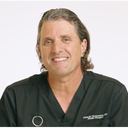Posted underEyelid Surgery q&a
What are the differences in results and benefits for doing fat repositioning versus a fat transfer? What are the pros and cons?
Why do some doctors recommend and perform fat repositioning vs. fat transfer vs. fillers for the same pair of eyes? (I am getting different recommendations for my lower eyelid surgery, making it very confusing and hard to decide and choose a doctor). Does this have to do with what each doctor is good at? And what are the pros and cons for each of these approaches for filling in the area between the tear trough and malar? And which is best for avoiding hollow eyes and ectropion?
Answers (37)
From board-certified doctors and trusted medical professionals
Dr. Patrick Felice, MD

Dr. Patrick Felice, MD
Board Certified Plastic Surgeon
Answer
Dr. Peter D. Geldner, MD

Dr. Peter D. Geldner, MD
Board Certified Plastic Surgeon
Answer
Dr. Nirmal Nathan, MD

Dr. Nirmal Nathan, MD
Board Certified Plastic Surgeon
Answer
Dr. Kenneth Hughes, MD

Dr. Kenneth Hughes, MD
Board Certified Plastic Surgeon
Answer
Dr. Jason Emer, MD

Dr. Jason Emer, MD
Dermatologic Surgeon, Board Certified in Dermatology
Answer
Dr. Mark Beaty, MD

Dr. Mark Beaty, MD
Board Certified Facial Plastic Surgeon
Answer
Dr. Michael R. Macdonald, MD

Dr. Michael R. Macdonald, MD
Board Certified Facial Plastic Surgeon
Answer
Dr. John Michael Thomassen, MD

Dr. John Michael Thomassen, MD
Board Certified Plastic Surgeon
Answer
Dr. Sam Speron, MD, FACS

Dr. Sam Speron, MD, FACS
Board Certified Plastic Surgeon
Answer
Dr. David K. Isaacs, MD, FACS

Dr. David K. Isaacs, MD, FACS
Oculoplastic Surgeon, Board Certified in Ophthalmology
Answer
More Eyelid Surgery Questions
See all Eyelid Surgery Q&AWE SEND PRETTY
EMAILS
What’s trending? Who’s turning heads? Which TikTok myths need busting? We’ve got you. No fluff, no gatekeeping—just real talk. Get our free, unfiltered newsletter.

